The Best Mirrorless Cameras for Travel and How to Choose in 2019
With mirrorless cameras flooding the market en masse, it's hard to find one that's going to be perfect for taking with you on your travels. These remarkable modern cameras pack big image sensors into compact and lightweight bodies that compete with or even surpass any DSLR offerings. Since the technology has now matured and lens options have been steadily growing, switching to a mirrorless camera makes more sense now more than ever and finding the best Mirrorless camera for travel has become a challenge.
What Is A Mirrorless Camera?
A mirrorless camera, is as the name implies, lacking a mirror. It's simply a DSLR, which is to say a Digital Single Lens Reflex camera, without the mirror mechanism that makes the latter bulky. The DSLR design hasn't changed much since the inception of the Single Lens Reflex (SLR) film cameras of the past. The only different thing is the digital sensor that's fixed unto the camera that replaced the loading of film.
A "reflex mirror" sits between the sensor (or film for SLR) to reflect light coming through the lens into your "optical viewfinder" so you can see what your lens sees. When you press the shutter, this mirror flips up, and the light passes through the shutter curtain and into the sensor (or film). This extra "reflex mirror" mechanism is taken out the equation from the Mirrorless design making the camera less bulky and slightly lighter. This also means you can not have an optical viewfinder in a mirrorless camera since there's no device to reflect light to the viewfinder.
With mirrorless camera design, the sensor is exposed to the light while the shutter is open. This allows a digital preview of the through an "electronic viewfinder" or LCD. In turn, you see precisely what the image look like before you press the shutter. It even has the capability of reading the pre-exposure data and display a histogram. This also means that a Mirrorless camera does require more energy and battery power to run than its DSLR counterpart; in the past, it's been an issue to the Mirrorless design but has been primarily addressed with the newer cameras.
In all aspects, there is no difference between a Mirrorless Camera and a DSLR outside of the "reflex mirror" and manufacturers can place one the same sensor on both.
Why Pick Mirrorless Camera Over DSLR?
Size & Weight
DSLR camera bodies are relatively bigger and heavier, as they will need to accommodate the mirror and a prism. The body of a Nikon D750, for instance, is smaller than its predecessor the D850, but still a somewhat bulky at 3 inches deep before even mounting the lens. A mirrorless camera design is going to be smaller compared to a DSLR as it sheds the prism and reflex mirror. The Sony A6300 includes a body just 1.6 inches thick and weighs 1.75 lbs with its 16-50mm kit lens. The Mirrorless camera is almost as small as your common everyday point and shoot. You will be able to have more room in your camera bag, carry more gear, such as additional lenses, and enjoy the weight savings.
Picture Stabilization
No way around it, shaky hands result in blurry pictures, and the effects are even more magnified the longer the shutter is open or, the longer you zoom. Modern DSLR and Mirrorless cameras offer image-stabilization or anti-shake (IS) systems. However, both have different approaches to technology. Most DSLR systems offer the IS on the lens itself while with most Mirrorless cameras the IS is built into the body.
While the differences between these strategies of IS are minimal in terms of quality, the costs associated with it vary greatly. Lenses that have IS built-in are more expensive and if you want IS across all your lens collection, you will have to pay for each the feature on each lens. In contrast, you get the benefit of IS on Mirrorless cameras on all the lenses in your collection. That means saving more money in the long run.
Video Shooting
Due to their on-chip focus detectors, higher-end mirrorless cameras are usually better suited to video shooting. Mirrorless cameras such as the Olympus OM-D EM-10 Mark ii and the Sony A7R Mark II offers 5-axis image stabilization, which is a characteristic not found on DSLRs. This has prompted several pro videographers to change on high-end mirrorless cameras because of their smoother, less shaky footage. DSLRs can not utilize phase detection with up the mirror while recording video so that they must use the slower, less accurate, contrast-detection focus procedure. This contributes to the familiar blur look during video once the camera begins hunting for the correct attention.
Shooting Speed
Both DSLR and Mirrorless technologies can shoot at breakneck shutter speeds and catch a burst of images quickly. Except for a few high-end DSLRs, mirrorless cameras have a slight edge; The lack of a reflex mirror makes it simpler to take photos after photos. Although, Mirrorless cameras don't have an extra mechanism for reflex mirrors, most still use a mechanical shutter; where a camera lifts to expose light to the sensor. They also have the option of working with an electronic shutter, which means they can shoot quicker and more quietly.
To Summarize
Mirrorless cameras have the advantage of usually being lighter, more streamlined, quicker and better for video. When it was first introduced there were fewer lenses and accessories, but that has mostly been addressed. DSLRs have the benefit an optical viewfinder, but they are more complex and bulkier. If you're starting in photography without any investments on a particular lens system, the best route may be the Mirrorless route, and we're to show you the best Mirrorless camera for travel that suits your style.
Below, we break down the best mirrorless cameras for travel in 2019, from full-frame versions for professionals to lower cost options.
Sony Alpha A7 III
MSRP: 2198 US$ (Body only)
Sensor size: Full frame (35.8 x 23.8 mm)
Megapixels: 24MP
Weight: 650g (22.93 oz)
Pros:
- 693-point AF system
- Uncropped 4K video
- Double the battery life of the last model
- Packs professional features at affordable price
Cons:
- Limited touchscreen control
- Not as weather-resistant as the Fujifilm's X-H1
- No 10-bit video output like Panasonic's GH5s
- Fewer megapixels than A7RIII
In contrast to its predecessor, the A7 II, the Sony A7 III was upgraded in almost every way; when compared to other similarly priced Mirrorless full frame options, the A7 III is a cut above in several aspects. What else is there to say that probably every other photographer on the planet, who's held an A7 III, hasn't already said? It's one hell of a camera for the price point.
See The Sony Alpha A7 III
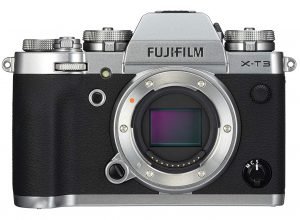
Fujifilm X-T3
MSRP: 1499 US$ (Body Only)
Sensor size: APS-C (23.5 x 15.6 mm)
Megapixels: 26MP
Weight: 869g (30.7 oz)
Pros:
- Excellent 26.1-megapixel sensor
- High-speed burst modes
- Significantly improved autofocus
- 4K/60 and high bitrate video
- Both microphone and headphone jacks
Cons:
- Very sensitive to touch input
- No in-body image stabilization
- Could use a bigger buffer
On the other hand, there's still no built-in stabilization and has average battery life. Travel photographers, however, may see that the X-T series strikes the perfect balance of size, usability, and style, and while IBIS and a bigger battery might alleviate some issues, it would have made the camera body bigger. The X-T series is among the most satisfying to travel with especially with its attractively-styled, tactile controllers, small enough to pack, and delivering photos that are great out-of-camera that requires little post-processing. The previous X-T2 was already an excellent camera, and with improvements in autofocus, burst speed or video, then the X-T3 takes over the mantle one of the best all-around cameras for travel.
See The Fujifilm X-T3
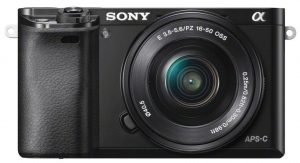
Sony Alpha A6000
MSRP: 648 US$ (Body only)
Sensor size: APS-C CMOS sensor
Megapixels: 24.3MP
Weight: 344g (12.13 oz)
Pros:
- Incredibly fast autofocus
- 1fps burst shooting with tracking focus
- Amazing high ISO image quality
- Sharp OLED EVF
- Tilting rear display
- Inbody flash and multifunction hot shoe
- WiFi with NFC
- Downloadable camera apps
- 1080p60 video capture
- High ISO performance
- Great specification
- AF speed
- Very high resolution 24 Megapixel sensor
Cons:
- Overly sensitive eye sensor
- Slow start-up
- EVF lags in very dim light
- Lacks analog mic input
- Some apps must be purchased
- The LCD screen could be better specified
- The laborious process to set a single AF area position
- No touchscreen
- Elementary Wifi remote control and no GPS tagging
- Apps sometimes feel like reinstating features
- No 3.5mm microphone jack
- Missing leveling gauge
- No miniature effect for movies
- No silent shutter option
All three are great options, but if you do not require 4k video or weather-proofing, the original A6000 is tough to beat for value. It packs a 24 Megapixel APS-C sensor, electronic viewfinder, swivel screen, Wifi with NFC, 1080p pictures up to 60fps and a hot shoe/accessory mount into a tiny body. Most exciting of all is that the hybrid AF system which embeds phase-detect AF points across nearly the entire sensor area, letting it track fast-moving subjects wherever they may be. The A6000 might be the perfect all around travel camera if full frame isn't such a big deal to you.
See The Sony Alpha a6000
Fujifilm X-H1 Mirrorless Camera
MSRP: 1299 US$ (Body only)
Sensor size: APS-C (23.5 x 15.6 mm)
Megapixels: 24MP
Weight: 673 g (23.74 oz)
Pros:
- Tried-and-tested imaging pipeline
- Body-based image stabilization
- Super-fast focus on 14fps tracking
- Dedicated AF-On button
- 24MP APS-C imaging
- High bit rate 4K video
Cons:
- Not a huge advance on the X-T2
- Same price as some full-frame rivals
- Not a true vari-angle LCD
- Add-on grip required for top performance
- Performance hasn't moved on from X-T2
Despite upgraded strong body though, the battery is a little underpowered, and the 4k movies are restricted to 15-minute clips; which can be resolved using optional booster grip. The sensor is a bit outdated at two years old, and it's also currently available on bodies half the cost. The X-H1 is an excellent travel all-rounder that may not be as great as it's competitors. If however you are invested into the X-system lenses, the X-H1 is perfect and one that is a joy to travel with, delivering exceptional quality out-of-camera with the new benefit of built-in stabilization.
See The Fujifilm X-H1
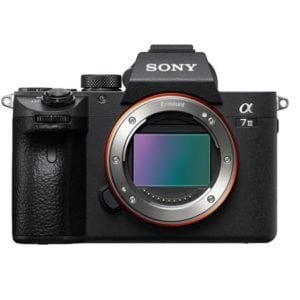
Sony Alpha A7R III
MSRP: 3375 US$ (Body Only)
Sensor size: BSI CMOS sensor
Megapixels: 42MP
Weight: 657g (23.2 oz)
Pros:
- Hybrid stills and video shooters
- Proven 42MP full-frame sensor
- 10fps image capture with tracking
- Tilting touch LCD
- Dual card slots
Cons:
- Limited touchscreen control
- No XQD card slot
- Only one card slot supports UHS-II speeds
- Lacks built-in flash
- A little expensive
The battery life has been improved as well as the controls, equipped with a better viewfinder, double card slots and even has a touchscreen. The Wifi control also functioned well and complemented by Bluetooth for easy location tagging. The touchscreen could stand some improvements, and it would have been great to have 4k in 60p. But on the all in all, the A7R Mark III is an exceptionally high and remarkable adventure that will satisfy any budding travel photographer. Sony A7 III is our pick as best Mirrorless camera for travel today.
See The Sony Alpha a7R III
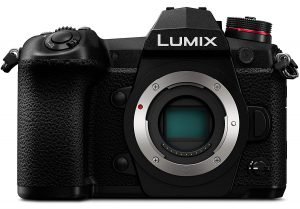
Panasonic Lumix DC-G9
MSRP: 1298 US$ (Body only)
Sensor size: Four Thirds (17.3 x 13 mm)
Megapixels: 20MP
Weight: 658g (23.21 oz)
Pros:
- Excellent spec sheet
- Superb value for money
- Brilliant viewfinder
- 5-stop image stabilization
- Superior Ergonomics
Cons:
- Some may expect more than 20MP
- Some Android users may want NFC
- Large body (for an MFT camera)
- ISO range could be broader
- Burst rate has odd limitations
There is a composite High Res mode that can deliver better detail with the right subjects than other cameras with a much bigger MP count. Also, there is easy charging and power over USB, powerful wireless features attached by Bluetooth, and Panasonic's 6K and 4K photo modes that make it simple to shoot fast moments. There is little to complain except for the 10-minute video limit in 4k in 50p or 60p. For travel, the Lumix DC-G9 is exceptionally competitive at the $1298 price range.
See The Panasonic Lumix DC-G9
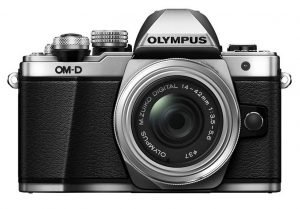
Olympus OM-D E-M10 Mark III
MSRP: 649 US$ (Body only)
Sensor size: Four Thirds (17.4 x 13 mm)
Megapixels: 16MP
Weight: 410g (14.46 oz)
Pros:
- Decent 16MP images
- Compact, solid build
- Built-in EVF and flash
- Raw and JPG capture
- Wi-Fi
- Detailed 4K video with excellent stabilization
- Excellent JPEG engine
Cons:
- Same sensor as E-M10 Mark II
- Expensive
- 16MP starting to look a little dated
- Minor update to the Mark II
See The Olympus OM-D E-M10 Mark III
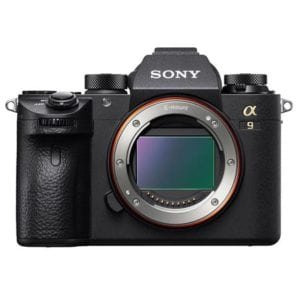
Sony A9 Mirrorless Camera
MSRP: 4498 US$ (Body only)Sensor size: Full frame (35.9 x 24 mm)
Megapixels:
Weight:
Pros:
- Shoots at 20fps with subject tracking
- A full-frame 24MP image sensor
- Electronic shutter eliminates blackout
- Tilting touch LCD
Cons:
- Pricey
- Only one slot UHS-II compliant
- Uncompressed Raw capture cuts speed to 12fps
The handling and ergonomics are so fantastic; it's easy to overlook that the A9 also sports in-camera stabilization, 4k movie, 1080p in 120fps, and powerful Wifi capability with Bluetooth. Sony also launched the A9 to debut better controllers with a much-improved battery life which plagued older models. It's not perfect, there are no Picture Profiles for a movie, the touchscreen needs to be improved, there are no built-in intervalometer or bulb timers, and still under-specked compared to some high-end DSLRs. But above all that, the A9 is an imposing camera than any travel photographer serious about having professional images should consider.
See The Sony A9
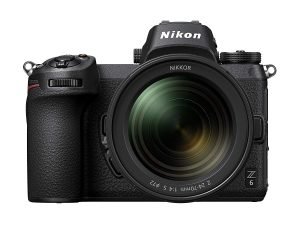
Nikon Z6 Mirrorless Camera
MSRP: 1997 US$ (Body Only)
Sensor size: Full-frame BSI-CMOS sensor
Megapixels: 24.5 MP
Weight: 675g (23.81 oz)
Pros:
- High-resolution EVF
- 11fps burst shooting
- Touchscreen interface
- Fantastic handling
- In-body image stabilization good for handheld shooting
Cons:
- Limited native lens selection at launch
- Single memory card slot
- The screen only tilts (rather than fully articulates)
- Battery life limited compared to a DSLR
It's an impressive specification to start with, but one that Sony matches with its A7 III. The Z6 fights back with a potentially faster XQD slot, 4k over HDMI, a more detailed viewfinder and bigger screen, n span timer and time-lapse movie attributes, has arguably slightly better sealing, ergonomics, and menus, and the possibility of the full diameter lens bracket. It's a Nikon version of the A7 III and one that would perhaps one day challenge Sony's grip on the Mirrorless market. If you're just a creating a new system from scratch, maybe look somewhere else, but if you would like to use your already decent collection of F-mount lenses, the Z6 might just fit the bill.
See The Nikon Z6
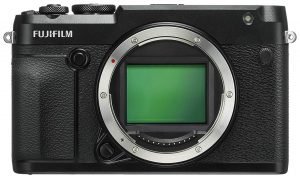
Fujifilm GFX 50R
MSRP: 4499 US$ (Body only)
Sensor size: Medium Format CMOS sensor (43.8 × 32.9mm)
Megapixels: 51.4MP
Weight: 775 g (27.34 oz)
Pros:
- Image quality
- Small size
- Weather sealing
- Solid build and handling
- Traditional exposure controls
- Size and weight
Cons:
- Leisurely autofocus
- No 4K video
- Burst mode only 3fps
- Contrast AF, not the fastest
- A full lens system could prove pricey
See The Fujifilm GFX 50R
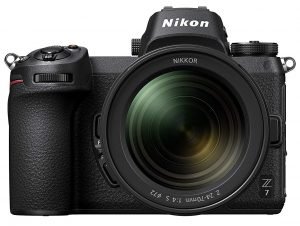
Nikon Z7 Mirrorless Camera
MSRP: 3997 US$ (Body only)Sensor size: Full frame (35.9 x 23.9 mm)
Megapixels: 46MP
Weight: 675g (23.81 oz)
Pros:
- High-resolution 45,7MP full-frame image sensor
- 90 percent autofocus sensor coverage
- Tilting touch LCD
- Superb electronic viewfinder
- 4K video
- Dust and splash resistant
Cons:
- Limited native lens selection at launch
- Single memory card slot
- Omits PC sync socket
- Relatively shallow buffer depth
- AWB can be neutral in daylight
One of the most significant downsides for the Nikon is the lack of dual card slots and a limited choice of "native lenses" for Mirrorless at launch. However, Nikon has a massive selection of lenses in the DSLR department, and the FTZ adapter does a great job of incorporating autofocus in recent Nikon DSLR lenses. This is a smart move by Nikon in facilitating the transition for existing Nikon users to Mirrorless (which they've been losing to Sony). If you are not dedicated to the Nikon system, perhaps Sony's A7r III is a better and cheaper alternative with a decent choice of native lenses at the get-go. Ultimately, the Z7 is an excellent start to the Z-system and one that we want to see more come off of Nikon's sleeve.
See The Nikon Z7
Canon EOS R Mirrorless Camera
MSRP: 2299 US$ (Body only)
Sensor size: Full frame (36 x 24 mm)
Megapixels: 30MP
Weight: 660 g (23.28 oz)
Pros:
- Fully articulating monitor
- 10Bit output via the HDMI
- Battery life
- Great control customization
- Dual Pixel AF with 5,655 AF positions
Cons:
- Needs a joystick
- No in-body image stabilization
- Cropped 4K video
- Single SD card slot
Travel photographers will enjoy one of Canon's best sensors coupled with its exceptional color science, even while videographers will love the fully-articulated display and C-log using 10-bit output at a far lower price than a Cinema camera. It would make sense to EOS 5D owners or those with mid-range APS-C bodies such as the EOS 80D who are searching for an upgrade and transition to Mirrorless. As it is, the EOS R inevitably struggles to compete most cameras mentioned here.
See The Canon EOS R
Canon EOS RP
MSRP: 1299 US$ (Body only)
Sensor size: Full frame (35.9 x 24 mm)
Megapixels: 26MP
Weight: 485 g (17.11 oz)
Pros:
- Newer users getting into full-frame for the first time, existing Canon users looking for a second camera body, anyone looking for a travel-friendly full-frame camera for casual use
- Svelte, lightweight body, Fully articulating screen, 4K video, Aggressively priced
- Compact body with a full-frame sensor, Vari-angle LCD, Integrated EVF, Quick, accurate autofocus, Macro stacking, and time-lapse tools, Wi-Fi, Attractive price
Cons:
- The body feels small for big RF lenses, Loses the R's sensor shutter, 1.6x crop + no Dual Pixel AF in 4K, Miserly battery life
- Small EVF, Low-cost native lenses not available yet, Inconsistent face and eye detection
- 4K video suffers from a heavy crop
- The sensor shows a limited dynamic range
- Small battery
- No built-in flash
There are no high-frame rate options for slow movement and no 1080 at 24p. Another oddity, when you fit an EF-S lens, the 1080 options aren't available, leaving you with the only 720p if you desire dual pixel AF or 4k. This combined with the reduced resolution of 10 Megapixels when adapting EF-S lenses to the RP does reduce its allure for owners of Canon's APS-C DSLRs searching switch to Mirrorless. The EOS RP makes the most sense as an upgrade for owners of older Canon DSLRs, like the 5D Mark II, or earlier APSC models such as the 70D.
See The Canon EOS RP
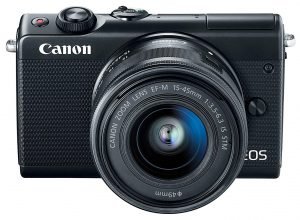
Canon EOS M100
MSRP: 449 US$ (Body only)
Sensor size: APS-C (22.3 x 14.9 mm)
Megapixels: 24MP
Weight: 302 g (10.65 oz)
Pros:
- First-time camera buyers and beginning photographers interested in general photography
- Fast and responsive autofocus
- Small camera
- Great image quality
Cons:
- Full HD not 4K video
- No electronic viewfinder
- Few external controls
It has an adequate selection of built-in effects, time-lapse films and great autofocus for stills and video. Beyond this, it delivers the same 24 Megapixel APS-C sensor as the sophisticated EOS M6, the same fast and precise Dual-pixel AF, 1080p movie, and reasonable 6fps continuous shooting. Recommended for travelers who want to upgrade from phone photography, also consider Panasonic's Lumix GX800 / GX850 and Sony's A6000 if you're planning to upgrade.
See The Canon EOS M100
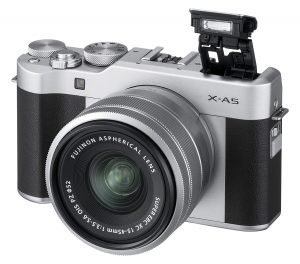
Fujifilm X-A5
MSRP: 499 US$ (Body only)
Sensor size: APS-C (23.5 x 15.7 mm)
Megapixels: 24MP
Weight: 361 g (12.73 oz)
Pros:
- Sharp, top-quality images
- Relatively inexpensive
- A compact 15-45mm kit lens
- Face / eye detection focus
- Mic socket
Cons:
- Bigger and heavier than rivals
- Autofocus could be faster
- Touch-screen LCD doesn't swing out to the side
- Limited ISO range when shooting raw
- Menus feel slow at times
It is advertised as having 4k, but it only works at 15 fps which isn't fast enough for smooth motion shots; it remains useful for some burst modes. The highlight of the X-A5 is Fujifilm's picture processing which is always one of the best in its class. With their X-Trans sensors, the colors pop without being too gaudy, and skin tones stay true. Travel photographers will be happy with this camera, but it should be pitted against the Sony A5100, Canon EOS M100, X-T100, and Olympus E-PL9 when making some shopping comparison.
See The Fujifilm X-A5
There you go, we've covered some pretty awesome cameras on this list and you should be on your way to finding the best Mirrorless travel camera for you. Check out our take on the best Sony E Mount lenses for travel to accompany your Sony Full Frame. Perhaps you're looking for something a little more compact? Check out our pick for the best Point & Shoot cameras for travel!
WHAT DO YOU THINK IS THE BEST MIRRORLESS CAMERA FOR TRAVEL?
ORIGINALLY POSTED AT ALWAYS WANDERLUST - The Best Mirrorless Cameras for Travel and How to Choose in 2019
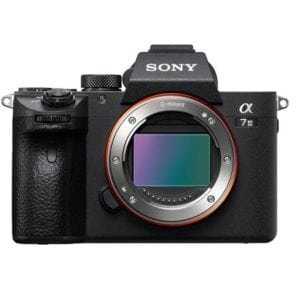
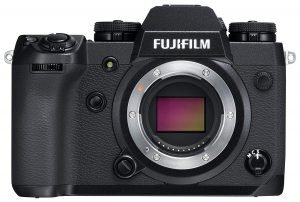
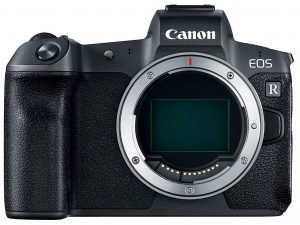
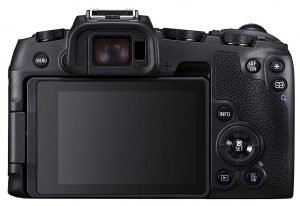
I am pretty locked into the Nikon DSLR system due to price, but for people thinking about the choice between the two systems and new or relatively new to digital photography the above may be a very good reason, WYSISYG - the What You See Is What You Get, view finder thing. I can't tell you how many times I have taken a lot of pictures only to remember and forget that I had my settings way way off, (I use the manual choice most of the time since I am trying to learn the ins and outs of good photography) I do not have my eye trained yet to full look at the info in the view finder, and I sometimes miss that I had a very high or very low ISO selected.
Comprehensive write up. I’m in the market right now for a mirrorless camera. I’m looking at a Sony A6400 or stepping up to the Nikon Z6.
Posted using Partiko iOS
great post- everyone have his on taste for his camera. I have a DSLR and a Mirror Less, but i must say, i like more the DSLR. Because the size is very important for me. Holding my 100-400mm L Lens with a tiny Mirror Less is not funny for the whole day. As well i didnt like the electronic search window. For my taste, i work with my DSLR more happy.
Great article, the Sony a6300 is an excellent camera body and I love the fact that it has a mic input so you can use external microphones with the camera too.
With the new tech put into the a6400, I think it is hard to recommend the a6300. But yeah, that whole series from Sony is fantastic both for a beginner's choice and also a travel body that is smaller than the rest.
Nice Wanderlust post. Here's another good comparison of DSLR cameras.